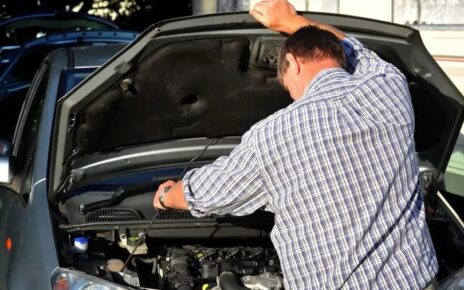The search for affordable car battery Singapore options reveals more than mechanical necessity—it exposes the precarious economic foundations upon which event professionals build their livelihoods in this tropical metropolis. In a city where 996,000 motor vehicles navigate roads that occupy just 12% of available land, the failure of a single battery component can cascade into professional disaster.
Event organisers operating in Singapore’s unforgiving climate face a peculiar burden: whilst the city-state’s economic prosperity creates abundant opportunities, its tropical conditions—with average temperatures ranging from 26-35°C—systematically assault the very equipment upon which their businesses depend. This environmental reality becomes particularly acute for event professionals who often lack the financial buffers to absorb unexpected equipment failures, creating a cycle where those least equipped to handle automotive emergencies face the greatest risk of experiencing them.
The Thermal Economics of Professional Survival
Singapore’s tropical climate creates what I term “environmental taxation”—additional costs imposed by nature that disproportionately affect vehicle-dependent professionals. Research conducted by the Singapore Automotive Association indicates that the average lifespan of a car battery in Singapore ranges between 3 to 5 years, yet field observations suggest the reality is often far grimmer.
Climate-Driven Battery Performance:
- Global standard: 3-5 years average lifespan
- Singapore reality: 1.5-2 years typical performance
- Heat impact: Temperatures above 30°C reduce efficiency by 15-25%
- Monsoon stress: December-February moisture accelerates corrosion
Most car batteries last about 1.5 to 2 years in Singapore’s tropical conditions, creating a hidden tax on event professionals who depend on reliable transportation for equipment delivery and client meetings. The mathematics are unforgiving: whilst colleagues in temperate climates budget for replacement every four years, Singapore-based organisers must plan for biennial expenses reaching $300-700 per vehicle.
The Price Architecture of Automotive Dependency
The cost of replacing a car battery in Singapore can range from SGD 100 to SGD 300, depending on the make and model of your car and the type of battery you choose, yet these base figures obscure the true cost of vehicle dependency in the events industry. Hidden within these price ranges lies a complex ecosystem of service fees, warranty considerations, and emergency surcharges that can dramatically inflate actual replacement costs.
Comprehensive Market Stratification:
- Budget options (Lead-acid): $100-150 (12-18 month lifespan)
- Mid-range (Enhanced Flooded Battery): $150-250 (18-24 month performance)
- Premium (AGM/Lithium): $250-700 (24-36 month durability)
- Emergency replacement: $200-400+ (crisis pricing with installation)
- Mobile service fees: An Additional $50-100 for on-site replacement
- Diagnostic charges: $20-50 for battery testing and system analysis
For event professionals, these represent insurance premiums against professional catastrophe. A failed battery during critical setup can destroy client relationships and eliminate future bookings. Yet the professionals most vulnerable—freelance coordinators, startup agencies—are precisely those least able to afford premium battery technology.
Geographic Inequality and Service Access
Service Distribution Patterns:
- Central Business District: Premium pricing ($250-400), convenient locations
- Industrial estates: Competitive rates ($100-250), limited weekend availability
- Residential areas: Moderate pricing ($150-300), variable service quality
- Mobile services: Convenience premium ($50-100 additional), 24/7 availability
This geographic dispersion creates “spatial mismatch”, where affordable services exist in locations that impose additional costs. Event professionals must choose between convenient but expensive replacement and cost-effective options that consume precious time during critical periods.
Brand Hierarchies and Strategic Choices
Performance Analysis:
- Premium tier (BOSCH, VARTA): $200-350, advanced heat resistance
- Mid-tier (AMARON, DELKOR): $150-250, reliable standard performance
- Budget options (SAIL, GLOBATT): $100-180, shorter lifespans
- Speciality lithium (Houny LiFePO4): $289-380, exceptional longevity
This hierarchy creates strategic dilemmas. Premium batteries require significant upfront capital but reduce replacement frequency. Budget options provide immediate relief but create recurring expenses. The choice often reflects broader business health rather than rational economic calculation.
Professional Risk Management
Successful event organisers develop sophisticated battery-related risk strategies that extend beyond simple replacement scheduling. These approaches reflect a deeper understanding of how automotive dependencies intersect with business continuity in Singapore’s demanding event landscape.
Mitigation Approaches:
- Preventive replacement: Scheduled changes every 18-24 months
- Portfolio diversification: Multiple vehicles with staggered schedules
- Service partnerships: Negotiated rates with reliable providers
- Emergency reserves: Maintained 24-hour mobile service relationships
- Cross-training staff: Multiple team members capable of handling automotive emergencies
- Backup transportation: Established relationships with rental agencies for crises
The most effective strategies require social capital—relationships with reliable mechanics and networks of colleagues willing to provide emergency assistance. These relationships become insurance against cascade effects during critical periods, transforming individual vulnerabilities into collective resilience.
Future Transitions and Challenges
Singapore’s electric vehicle adoption by 2040 will transform automotive maintenance. Currently, 79% own conventional cars versus 5% electric, but this transition presents new vulnerabilities, including heat sensitivity, infrastructure dependencies, and specialised maintenance requirements.
Conclusion: Power, Vulnerability, and Urban Life
The seemingly mundane topic of automotive battery maintenance reveals profound questions about economic vulnerability in tropical urban environments. Event organisers calculating battery replacement budgets engage with Singapore’s broader economic ecosystem, one that rewards foresight and punishes those unable to absorb unexpected costs.
For event professionals committed to building sustainable businesses, developing comprehensive automotive maintenance strategies represents recognition of how environmental conditions shape economic opportunities. In a city where professional success depends on reliable mobility, understanding the strategic implications of vehicle maintenance becomes essential knowledge, making informed choices about car battery Singapore options a crucial component of sustainable event industry practice.





